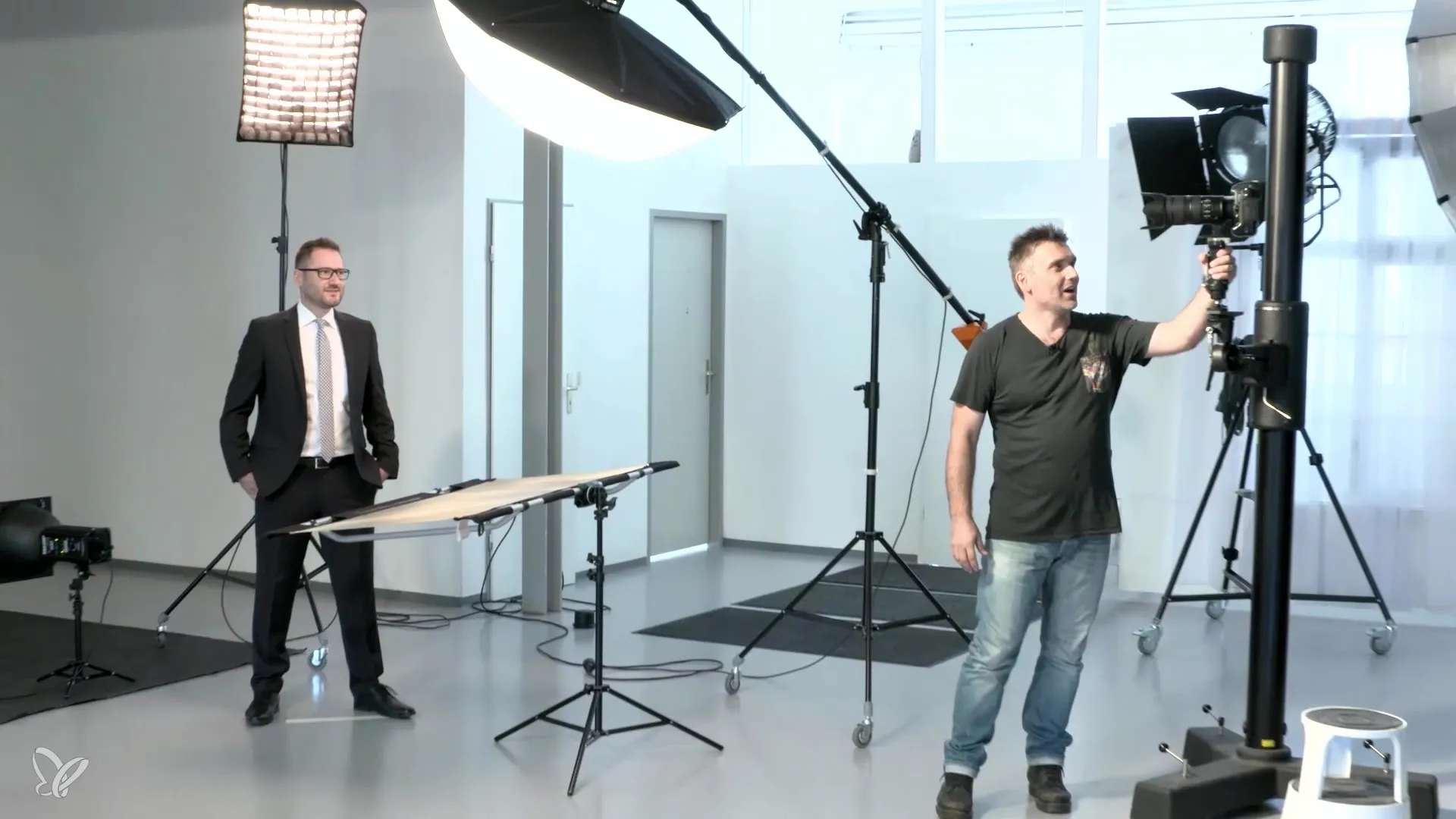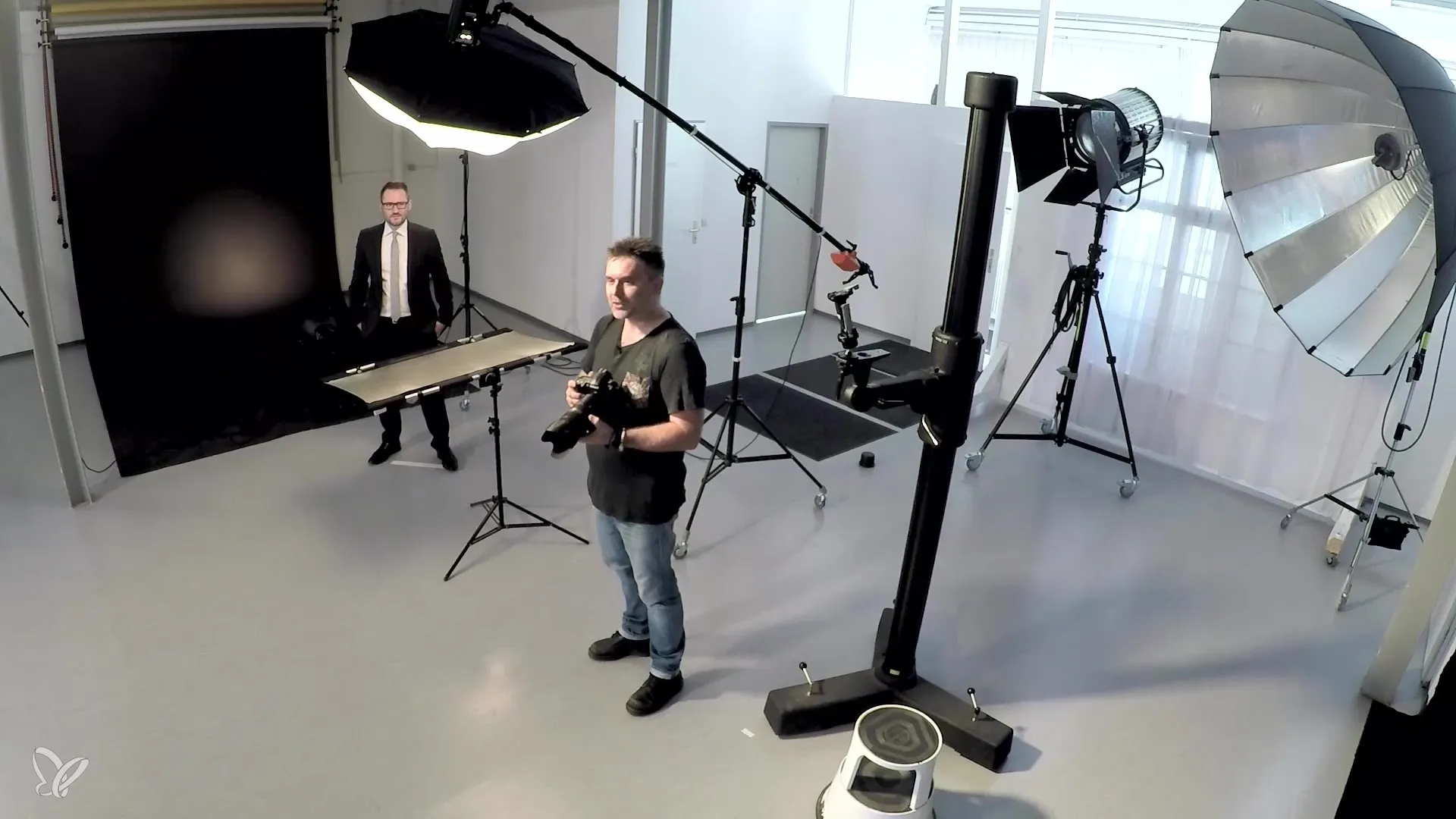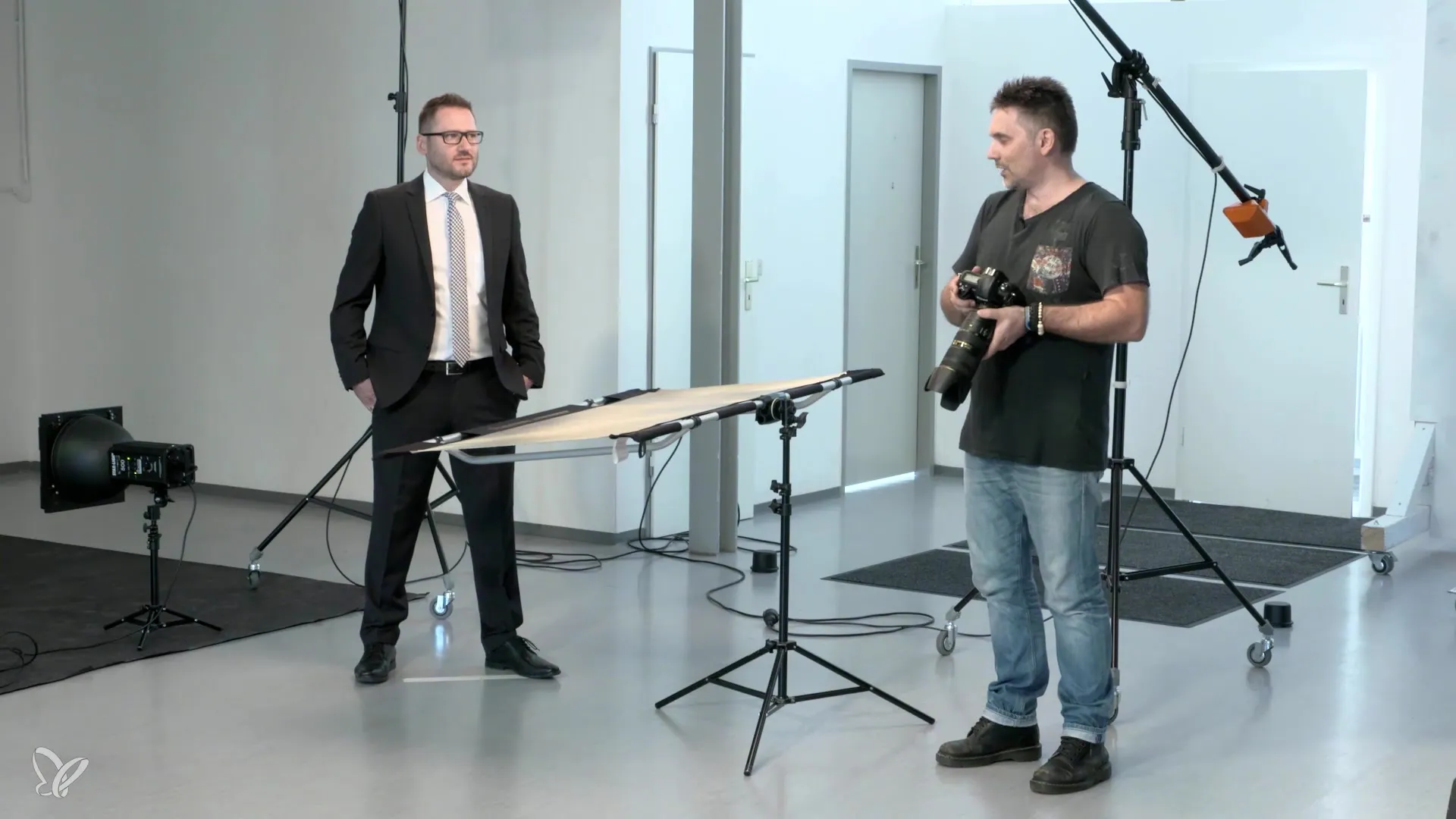The right photo workflow is crucial for the quality of your business portraits. Technical aspects, especially the camera settings, play a central role in this. If you want to photograph professionally in the studio, the choice of camera model and the right lens are essential factors. In this guide, I will describe how you can efficiently choose the suitable camera settings to create impressive portrait shots.
Key Insights
- Invest more in lenses than in the camera body; a high-quality lens significantly improves image quality.
- Pay attention to a consistent aperture (e.g., 2.8) in zoom lenses to ensure consistent lighting conditions.
- The white balance is essential for natural colors in your shots, especially with different skin tones.
Step-by-step Guide
Step 1: Choosing the Camera
Not every camera has to be expensive or professional. A mid-range camera is often sufficient to achieve appealing results. Make sure your camera has good image quality.

Step 2: Investment in Lenses
An important part of your equipment is the lenses. It is recommended to invest at least 80% of your budget in high-quality lenses. The better the lens, the sharper and more contrasted the images are. For example, a standard zoom lens of 70-200 mm can provide the flexibility you need for different shots.
Step 3: Aperture and Focal Length
Ensure that your lens has a constant aperture of 2.8. This means that the aperture remains constant while zooming. In the studio, you typically photograph with flash light, so the aperture plays a crucial role in image quality. Your aperture should be set to 9 to find a good balance between sharpness and light capture.

Step 4: Setting the Exposure Time
For studio shots, it is important that the exposure time is set accurately. In the example, we chose an exposure time of 1/100 seconds. This setting helps to capture only the flash light and exclude ambient light, which could have detrimental effects on image quality.
Step 5: White Balance
The white balance should always be set carefully to ensure natural colors. Particularly with different skin tones, it is important that the colors in the image are not distorted. A correctly set white balance ensures that the colors are represented vividly and accurately.

Step 6: Considering Color Temperature
The color temperature can vary depending on the season. In summer, colors are often more intense, while in winter, subjects may appear paler. A warmer tone (reddish) might be advantageous in such cases. By adjusting the white balance, you can achieve the desired nuances.

Summary – Business Portraits: Camera Settings for the Perfect Workflow
In this guide, you learned how important the choice of camera and especially the lenses are for the quality of your business portraits. The right aperture and exposure time ensure professional results, while the white balance and consideration of color temperature help you achieve natural colors.
Frequently Asked Questions
How much should I invest in a lens?At least 80% of your budget should go towards the lens to secure high image quality.
What is a constant aperture?A constant aperture – e.g., 2.8 – means that the aperture remains stable while zooming.
Why is white balance important?The white balance ensures that the colors in your images are represented vividly and neutrally.
How do I set the exposure time?The exposure time should be set so that only the flash light is captured, for example, 1/100 seconds.
How does the season affect color temperature?In summer, colors are more intense, while in winter the light appears paler. Depending on the season, the white balance should be adjusted to represent the colors correctly.


